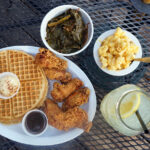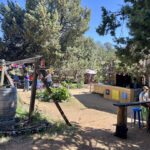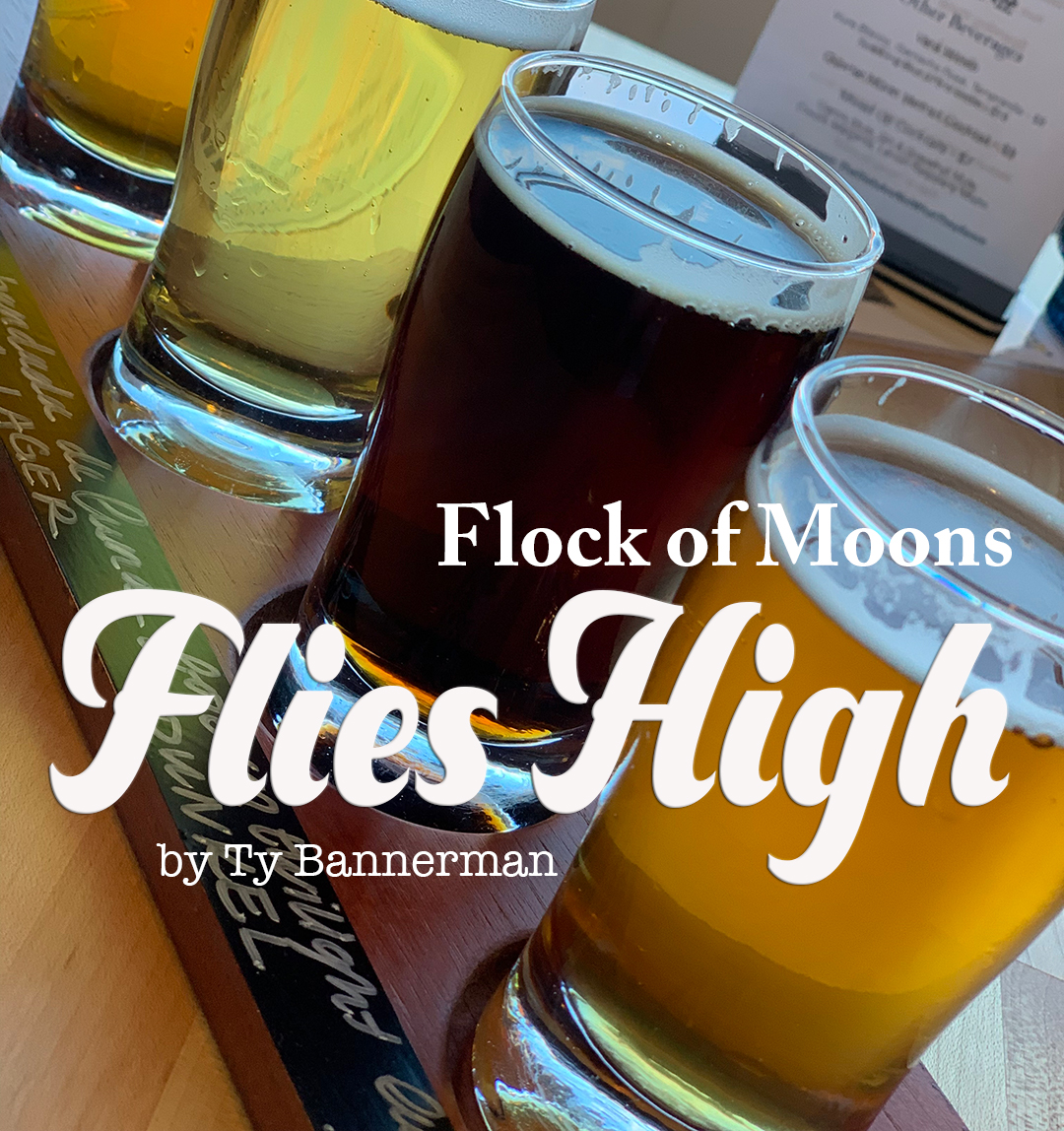
When you’ve lived in a city for long enough, there comes a point when you begin paying more attention to the things that are gone than you do to the things that are here now. The Sprouts building on Lomas was the Thrift Town, Moxi Hair Studio was the original Satellite Coffee (And sold toys? Am I remembering that right?), Fred’s Bread and Bagel once ruled Nob Hill in the same space that Zinc Wine Bar & Bistro now occupies, etc., etc. Eventually, the current city is haunted by the old.
For me, the whirling center of this nostalgia vortex is Harvard Drive, between Central and Silver. When I returned to Albuquerque as an adult in the mid nineties, the area was known as the Harvard Mall, and it quickly became a touchstone for my Duke City experience. On my way to UNM from my dingy apartment on Coal, I’d walk by El Patio, Kai’s, the Landlord Tenant Hotline, Petra Cafe, and Bird Song Books. The businesses were mostly housed in old bungalows from the early twentieth century, with some odd ramshackle structures selling herbs for neo-pagans and leatherworking goods for the crafty types. I stopped in at each of these places at least once, but the one I returned to on an almost daily basis was R. B. Winning Coffee.

It was a glorious scrum of Albuquerque’s counterculture: poets and songwriters, activist groups and hippies, and even the occasional—ugh—journalist, all rubbing their slightly grimy elbows together at the counter, making it a prime location for people watching, scribbling into notebooks, or proffering long political rants out on the patio.
But things changed. In the early 2000s, developers swooped in and bought, moved, or demolished the old bungalows and funky shop fronts. Then they enacted a new vision: Bricks. Big ol’ brick buildings. Much of the area south of Winning became mixed-use retail/residential complexes paired with scorched earth parking. And, in a coup de grâce for the old order, the name of the area was changed from Harvard Mall (which had been in use since 1980) to the Brick Light District.
In honor of the bricks. And, I guess, the lights.
For a while, Winning held on, a bulwark against change, but eventually, it too succumbed.
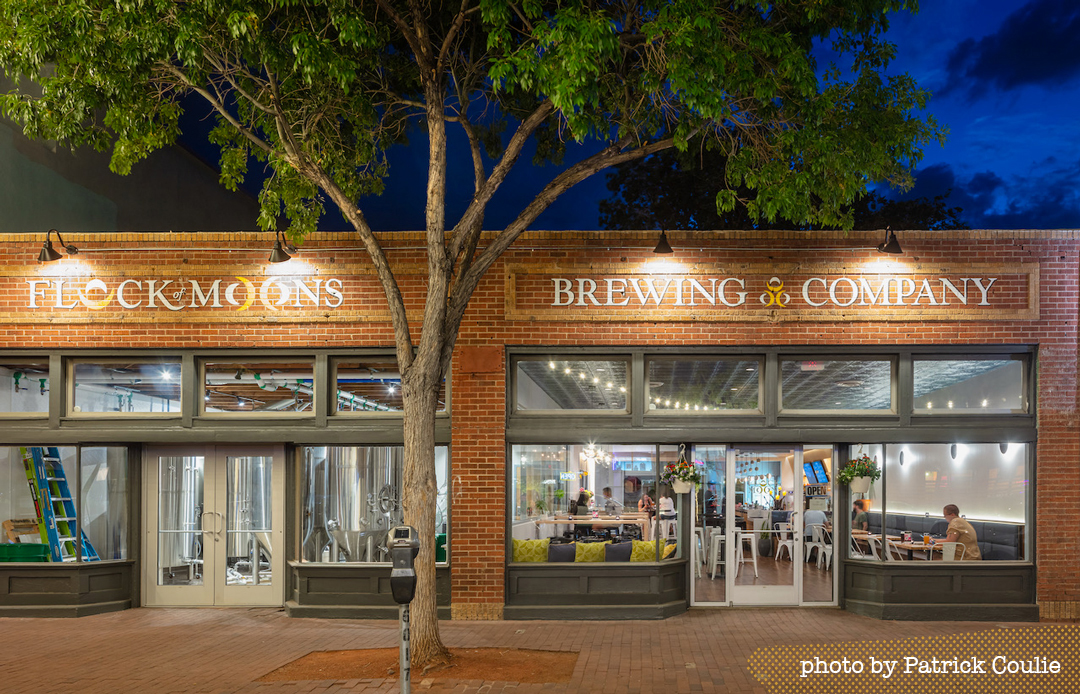
Ah, but I bring good news! I have stepped through the portal and journeyed from my bittersweet memories to the modern world, and the old Winning space is resurrected! It’s a brewery now—a brave choice in Albuquerque’s already crowded beer scene, but Flock of Moons holds up as a Harvard hangout, even if the hours have shifted from am to pm and the active ingredients from caffeine to ethanol.
The space itself has been completely redone, starting with the floor, which has lost the distinctive Winning . . . uh . . . patina (the bohemian lifestyle is not known for its cleanliness). Everything here is bright and clean, with straight lines and tall tabletops and one wall devoted to more intimate seating for those who prefer close conversation or to take their libation with a side of laptop productivity. It is still a social spot, in other words, and on any given evening, the space boasts lively dialogues and diatribes, as it was in the World Before.

The social lubricant at play, is, of course, the selection of beers brewed in the gleaming stainless steel fermenters, which stand visible through a glass window in the common room. If you’re lucky, you might even see the zymologists scurrying back and forth, devising new flavors for your tipsy enjoyment. All the requisite varieties are here—IPAs (hazy and otherwise), English ales, a selection of Belgians, and so on. On my visits, I found them all excellent examples of their styles. My favorite, to which I return again and again (and, uh, again), is the Forever Twilight Munich Dunkel. It’s a deeply reddish, nut-brown beauty with a rounded sweetness and just the right touch of bittering hops to balance the brew into a biscuit-like flavor. My partner is pilsner inclined and of the two available options, she most enjoyed the Bandada de Lunes, billed as a New Mexican lager. What’s a New Mexican lager? Well, it’s a lager brewed in New Mexico! Obviously! But it’s really more like a pilsner with extra-aromatic hops—something like a low ABV IPA, but featuring the crispness that makes lagers so immanently drinkable.
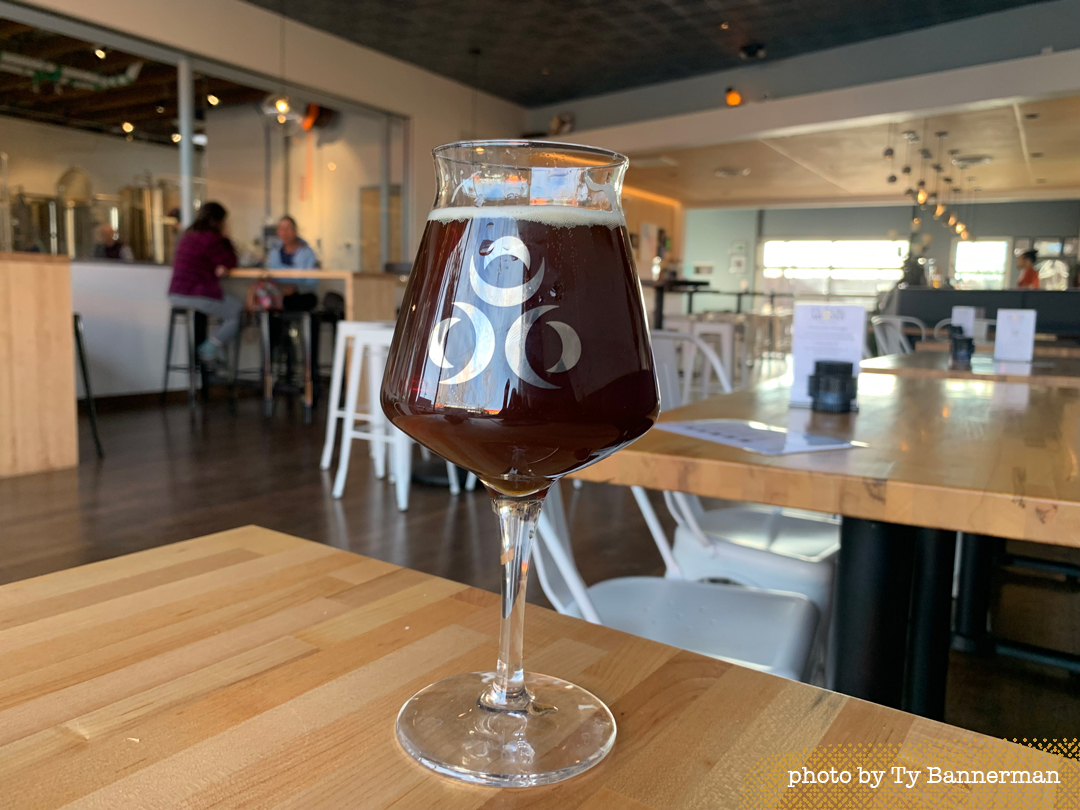
If you’re after something with a bit more of a punch but lacking the sometimes-cloying resin flavors of an IPA, the Quickening Moon Wee Heavy is a welcome change of pace. It’s a ruby-colored draft in a long-stemmed glass (to make you feel fancy!), with caramel notes enriching its malt into a perfectly dreamy example of a style too often missing from local beer lists.
Of course, you can always opt for a flight and work your own way through the selection. It’s a very mellow way to spend a quiet afternoon people watching. I speak from experience.

Flock of Moons, like most taprooms, doesn’t boast its own kitchen, but a spacious patio provides room for food trucks, and there are several nearby restaurants only too happy to pack you some takeout. My recommendation is the Mazaya Cafe almost directly across the street. As far as I know, it’s Albuquerque’s ONLY Nepalese-owned Mediterranean eatery, and the sampler platter, with gyros or shawarma, will bolster your brew sesh most pleasantly. Salt and Board is just a door or two down, if you’d prefer charcuterie, and Cheba Hut is there for sandwiches.
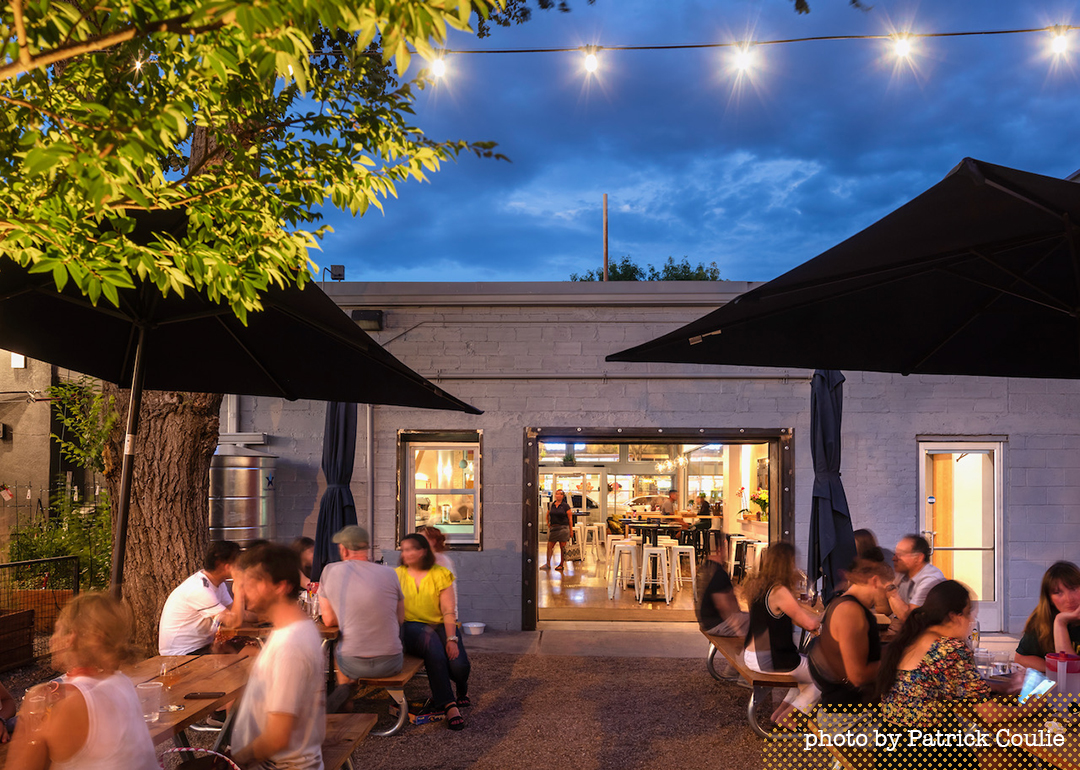
I still miss Winning. But all in all, the world has moved on from the dream of the nineties, and it’s comforting that the Brick Light District (or whatever we call it now . . . rumor is that the area is due for yet another “reimagining”) still has a spot so conducive to conversation, and welcoming to bohemian and bougie alike. It doesn’t hurt that the beer is pretty damn good too.
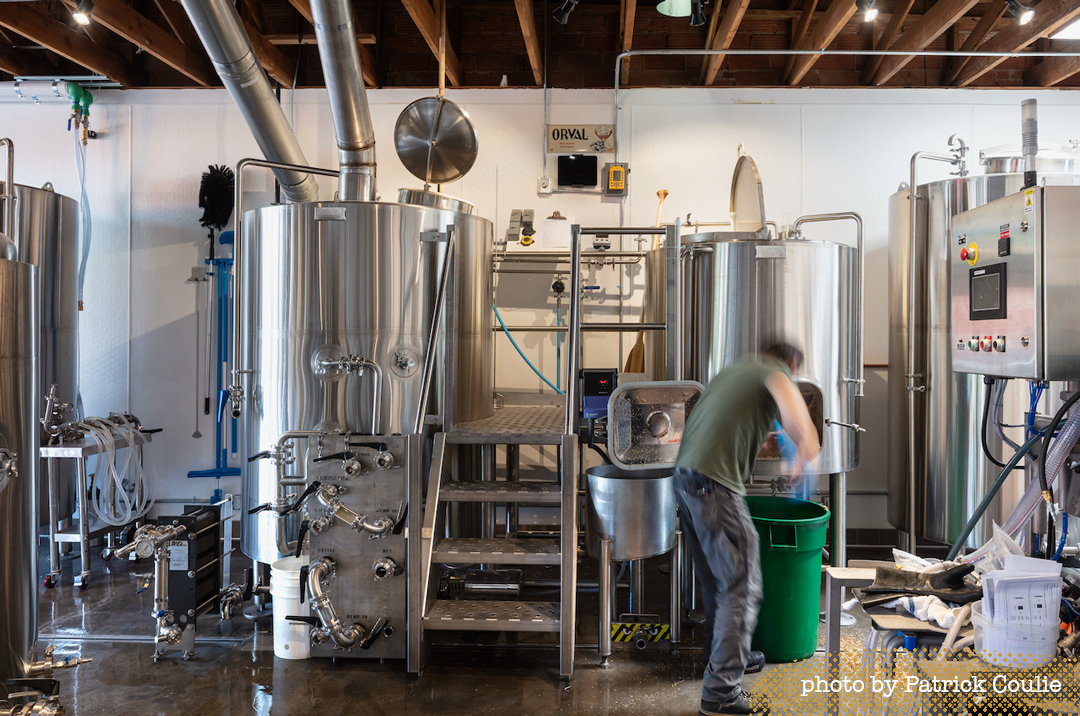

Ty Bannerman
Ty Bannerman has been writing about New Mexico for over a decade. He is the author of the history book Forgotten Albuquerque and his work has appeared in New Mexico Magazine, Atlas Obscura, Eater, and the American Literary Review. He co-hosts the podcast City on the Edge, which tells stories from New Mexico’s past.


